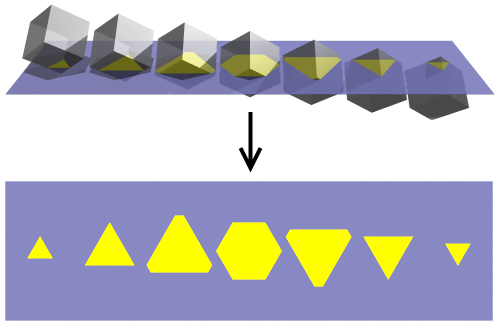There are more than 30 games with an additional spatial dimension ( list on Wikipedia ), which visualize in various ways and try to make the presence of the fourth coordinate understandable. But among those games that I got acquainted with, I did not find one for myself that would combine the following factors:
first-person view
possibility of free movement and rotation in all directions, without rigidly defined trajectories and angles of rotation
simple and familiar graphics, with textures and lighting
the absence of unnecessary gameplay elements and the greater focus of the game on the study of the four-dimensional world
In addition, there was a desire to do something similar myself, so I decided to create a minimal version of such a game - a procedurally generated four-dimensional labyrinth, visualized with 3D sections. Read on to see what came of it.
Section vs. projection
To begin with, I need to say a little about how to visualize 4D space. Among them, two main ones can be distinguished - sections and projections, which are most easily illustrated by analogy with 3D:
Cube sections in 2D:

Cube projection in 2D:

Sections of a tesseract (analogue of a cube in four dimensions) in 3D *:
* in fact, of course, these are also 2D projections of 3D objects, but we will omit this for simplicity

3D:

, , — - . , 4D ( 4D Maze Game):

3D , , , , . , , , 4D 3D, 3D — , :

3D . :

.
8 , 3D (16x16x16 ), , 6 2D . , , .
, 3D :

ZW 90 +-Z +-W:


, , 3D , :

, 3D , - , :
XW, -Y

, 3D , :
, ZW, YW

( , ):
1. ,
2.
3. , :
3.1.
3.2.
3.3. .2
, , . , , , , .
( ), . , — , :
, ( )
:
3D ,
, ;
, , .
« » , FPS ( AMD Ryzen 5 2600 1280x720 60 FPS).



, , . , , ( ). , , , .
: , windows
:
: 1, 2
4D